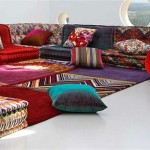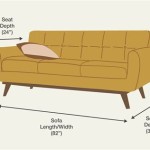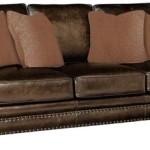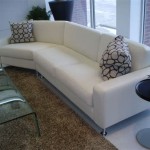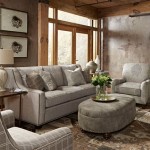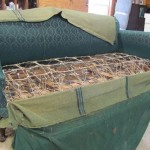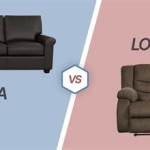```html
Sofas Built In-Situ: A Comprehensive Overview
The term "sofas built in-situ" refers to sofas that are constructed directly within a particular location, rather than being manufactured off-site and then transported for placement. This method of sofa creation offers numerous advantages and considerations compared to traditional, pre-fabricated sofas. Understanding the nuances of in-situ sofa construction is crucial for architects, interior designers, and discerning homeowners seeking customized and space-optimized seating solutions.
In-situ sofa building is not a new concept but has seen a resurgence in popularity due to the growing demand for bespoke interior designs that maximize space utilization and reflect individual aesthetic preferences. This approach allows for seamless integration of the sofa into the architectural fabric of the room, enabling the creation of seating areas that are perfectly tailored to the dimensions and style of the space.
Customization and Design Flexibility
The primary advantage of sofas built in-situ lies in their unparalleled customization capabilities. Traditional sofa designs are constrained by standard dimensions and pre-determined configurations. In contrast, in-situ construction allows for complete control over the sofa's size, shape, and materials. The sofa can be designed to perfectly fit awkward spaces, such as alcoves, corners, or rooms with irregular layouts, effectively eliminating wasted space and maximizing seating capacity. This is particularly beneficial in smaller homes or apartments where space optimization is paramount.
Furthermore, the design flexibility extends beyond just the dimensions. The choice of materials, including the frame construction, cushioning, and upholstery, can be meticulously tailored to the client's specifications. High-end fabrics, durable leathers, and sustainable materials can be seamlessly integrated into the design. The level of firmness, seat depth, and backrest height can also be customized to ensure optimal comfort and ergonomic support. In-situ construction allows for the incorporation of unique features, such as built-in storage compartments, integrated lighting, or custom shelving, further enhancing the functionality and aesthetic appeal of the seating area.
The design process typically involves close collaboration between the client, the designer, and the construction team. Detailed measurements and architectural plans are essential to ensure that the sofa is perfectly integrated into the space. 3D renderings and mock-ups can be used to visualize the final product and make necessary adjustments before construction begins. This collaborative approach ensures that the final result meets the client's exact requirements and exceeds their expectations.
Structural Integration and Durability
Unlike prefabricated sofas that are simply placed within a room, in-situ sofas can be structurally integrated into the building itself. This integration provides enhanced stability and durability, as the sofa becomes an integral part of the architectural framework. The frame of the sofa can be directly attached to the walls or floor, providing a solid and secure foundation. This is particularly advantageous in commercial settings or high-traffic areas where the sofa is subject to heavy use.
The construction process typically involves building a sturdy frame using materials such as timber, metal, or a combination of both. The frame is then carefully secured to the walls or floor using appropriate fasteners. After the frame is in place, the cushioning and upholstery are applied. The materials used for cushioning can include high-density foam, memory foam, or natural fillings such as feathers or down. The upholstery fabric is then carefully fitted and secured to the frame, creating a seamless and durable finish.
The use of high-quality materials and expert craftsmanship is crucial to ensure the longevity and structural integrity of the in-situ sofa. Skilled carpenters, upholsterers, and fabricators are essential for creating a robust and well-built seating solution that can withstand years of use. Regular maintenance, such as cleaning and occasional re-upholstering, can further extend the lifespan of the sofa and preserve its aesthetic appeal.
The structural integration of in-situ sofas can also contribute to improved sound insulation and thermal performance within the room. By filling gaps and crevices with insulation materials, the sofa can help to reduce noise transmission and improve energy efficiency. This can be particularly beneficial in apartments or homes with shared walls or challenging thermal conditions.
Considerations and Challenges
While sofas built in-situ offer numerous advantages, there are also several considerations and challenges that must be taken into account. One of the primary challenges is the complexity of the construction process. In-situ construction requires careful planning, precise measurements, and skilled craftsmanship. It is essential to engage experienced professionals who are familiar with this specialized construction method.
Another consideration is the potential for disruption to the living space during the construction process. In-situ construction can be time-consuming and may involve noise, dust, and other inconveniences. It is important to carefully plan the construction schedule and take steps to minimize disruption to the occupants of the building. Protecting surrounding furniture and surfaces is also essential to prevent damage during the construction process.
Cost is another important factor to consider. In-situ sofas are typically more expensive than prefabricated sofas due to the increased labor and materials involved. However, the added cost can be justified by the bespoke nature of the design, the enhanced durability, and the optimized space utilization. Furthermore, the investment in a high-quality in-situ sofa can add significant value to the property.
Accessibility can also be a challenge. If the construction site is difficult to access, this can increase the cost and complexity of the project. It is important to ensure that the construction team has adequate access to the site and that they can safely transport materials and equipment to the location. In some cases, it may be necessary to temporarily remove doors or windows to facilitate access.
Finally, the permanence of in-situ sofas should be carefully considered. Unlike prefabricated sofas that can be easily moved or replaced, in-situ sofas are typically a permanent fixture within the room. This means that any future renovations or modifications to the space may require the removal or alteration of the sofa. It is important to carefully consider the long-term implications of this permanence before committing to an in-situ sofa.
Despite these challenges, the benefits of sofas built in-situ often outweigh the drawbacks, especially for those seeking a truly customized, space-optimized, and durable seating solution. Understanding these considerations allows for informed decision-making and a smoother, more successful construction process.
```
In Situ Modular Sofa The Heart Of Any Space

In Situ Modular Sofa The Heart Of Any Space

In Situ Modular Sofa The Heart Of Any Space

In Situ Modular Sofa The Heart Of Any Space

Muuto In Situ 3 Seater Sofa Anderssen Voll
The In Situ Modular Sofa

The Verneuil Mohair Sofa By Design Frères Blend Interiors

15 Of The Best Modular Sofas These Four Walls

Horizonte Sofa Minotti Studio Como

Avio Sofa 3 Seater

